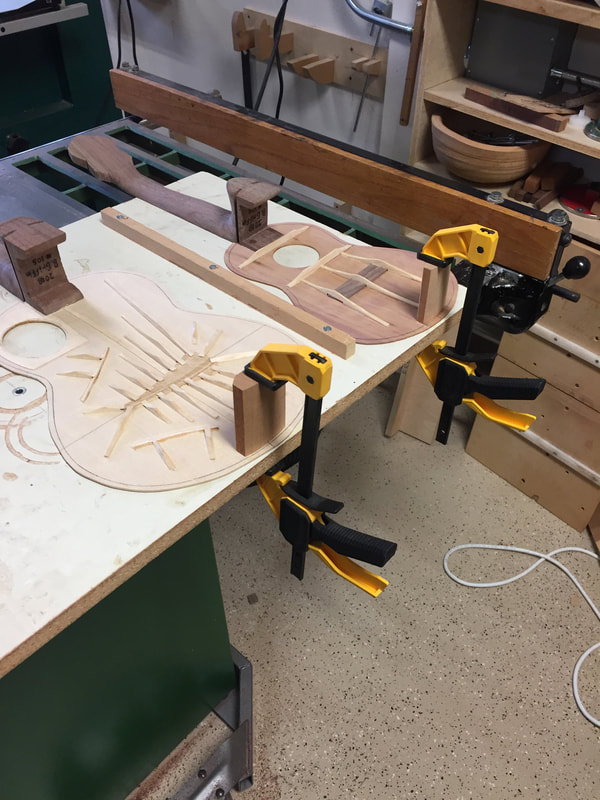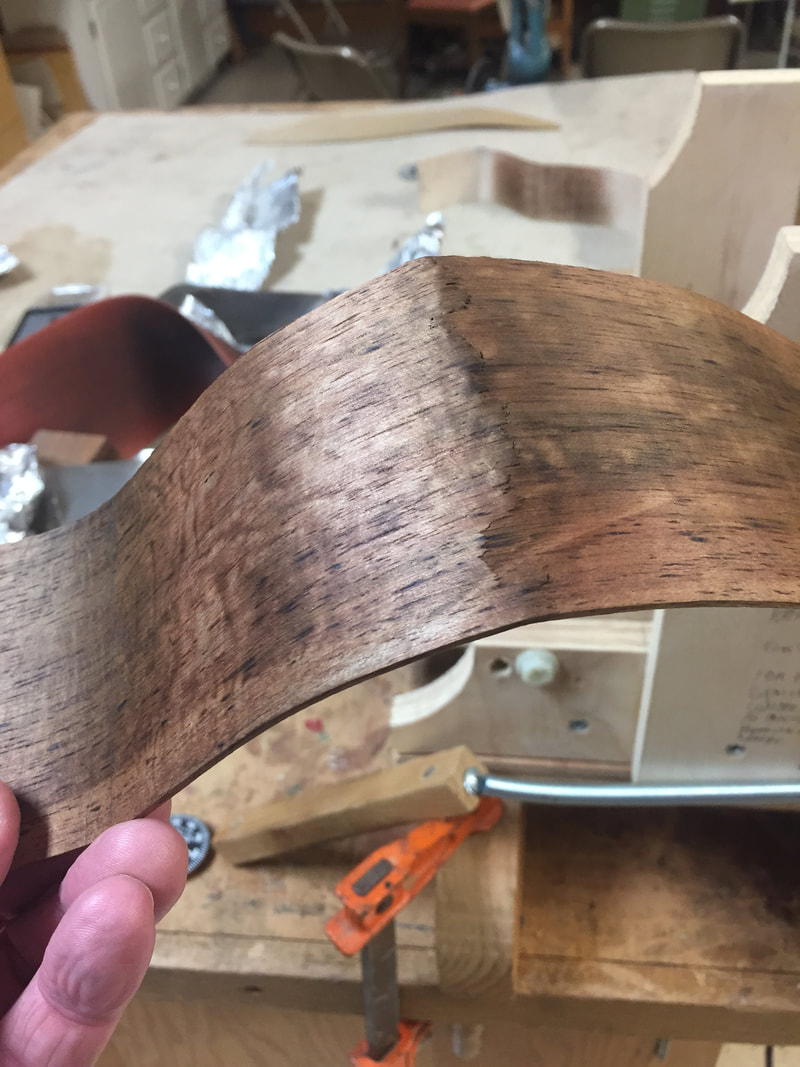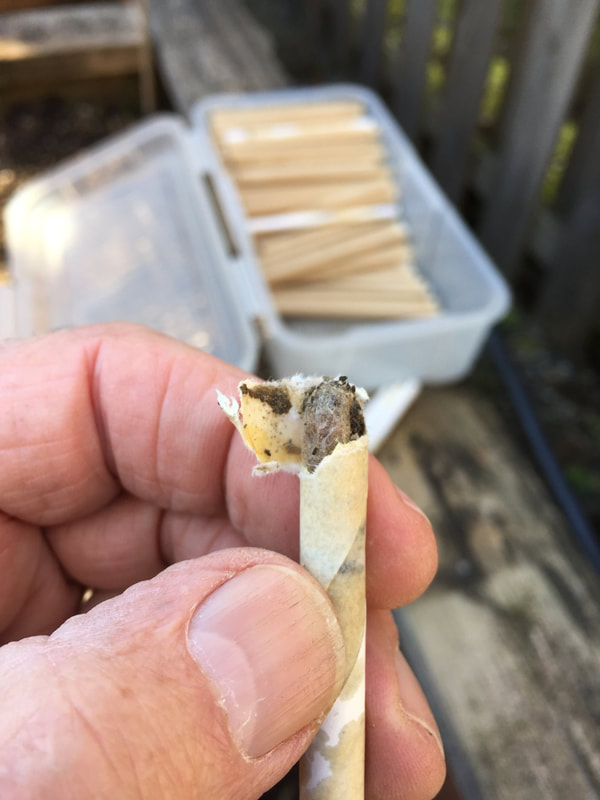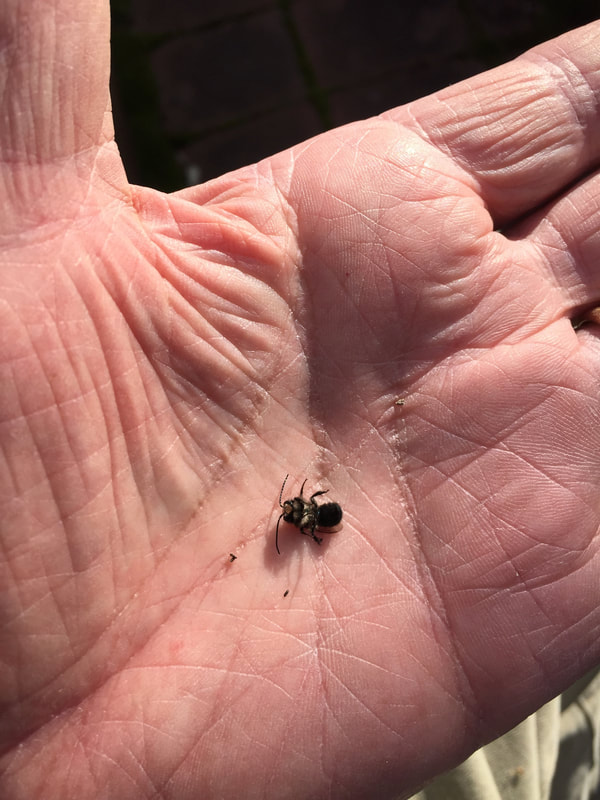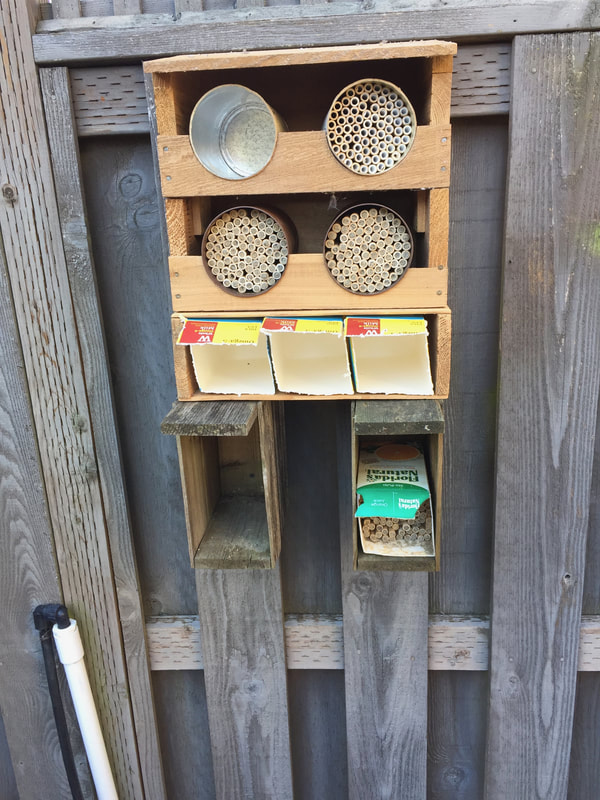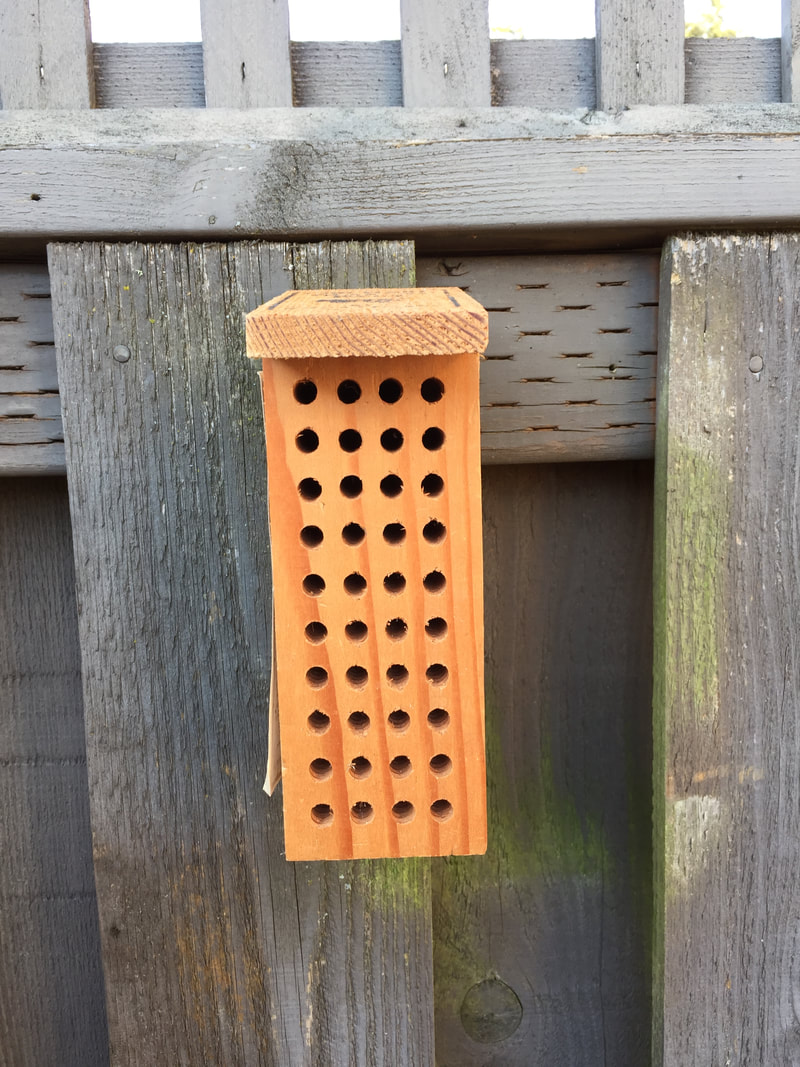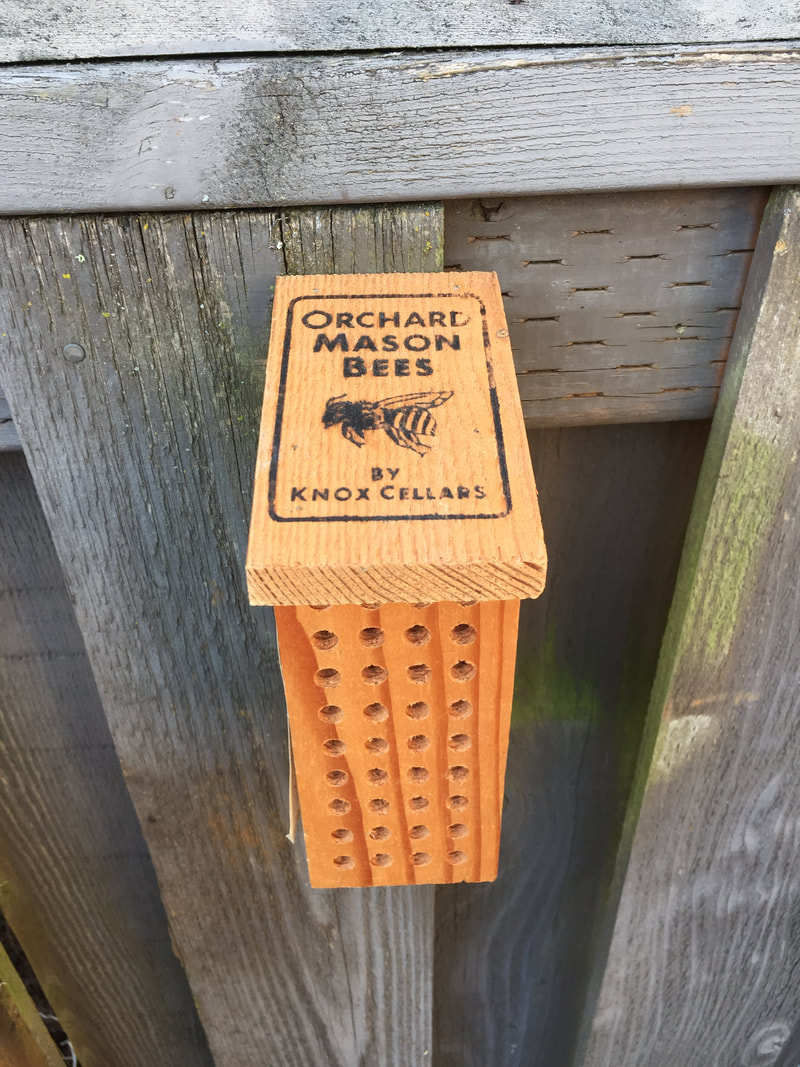It did'nt start out bad. I made the butt blocks for both ukes and got them glued and clamped.
But then I decided to bend the sides that I had nicely prepared several days ago. I got out the bender and the heat blanket and went through my usual routine, and promptly broke three out of three, Two tiger stripe maple concert sides, and one baritone Australian Blackwood side. That was enough- BAD KARMA today. I quit.
Fortunately I have plenty of maple, and a little bit more of the blackwood. I will wait for a better day when the muses sing. This was a lovely spring like day and I figured it was time to put the bees out.
The Mason Bees have been hibernating in the refrigerator all winter long. It is almost time for them to get to their work of pollinating. Last spring their mama gathered pollen and nectar into a lump and brought it to this paper tube. Then she laid an egg and stuck it right into the food. Then because she was a Mason Bee, she went looking for mud to seal in her work. The egg hatched into a larvae. The larvae spun a cocoon around itself and then spent the summer growing and eating. By fall the larvae had grown into an adult bee but remained inside that cocoon to sleep all winter long.
Here is the cocoon,
Here is the cocoon,
And here is the bee, Sleepily warming up and stretching in my hand. Look at those lovely long antenna. The female antenna are much shorter but the females are considerably larger. I carefully slit the cocoon with small scissors to free the bee.
This will be my bee colony for this year. Three of these containers are filled with tubes filled with hibernating bees. Only one container is now filled with empty nesting tubes. but I will add more in the days ahead. the bees prefer the nice clean tubes in which to lay their eggs.
And here is another way to provide homes for bees. Just drill deep 5/16ths holes in wood blocks and hang them on a sunny wall. If you have fruit trees to pollinate, there is nothing better than a Mason Bee. Easy to raise, they won't sting you, and you will have more apples and pears and cherries than you could believe. These bees work in every state of the union except for a couple of the deep southern states where the winters never get cold enough for them.
If you would like to learn more about Mason Bees you can google Knox Cellars Mason Bees and order a batch, and be sure to buy my book "The Orchard Mason Bee" by Brian L. Griffin. Say hello to Jim Ullrich and tell him I sent ya.
If you would like to learn more about Mason Bees you can google Knox Cellars Mason Bees and order a batch, and be sure to buy my book "The Orchard Mason Bee" by Brian L. Griffin. Say hello to Jim Ullrich and tell him I sent ya.
